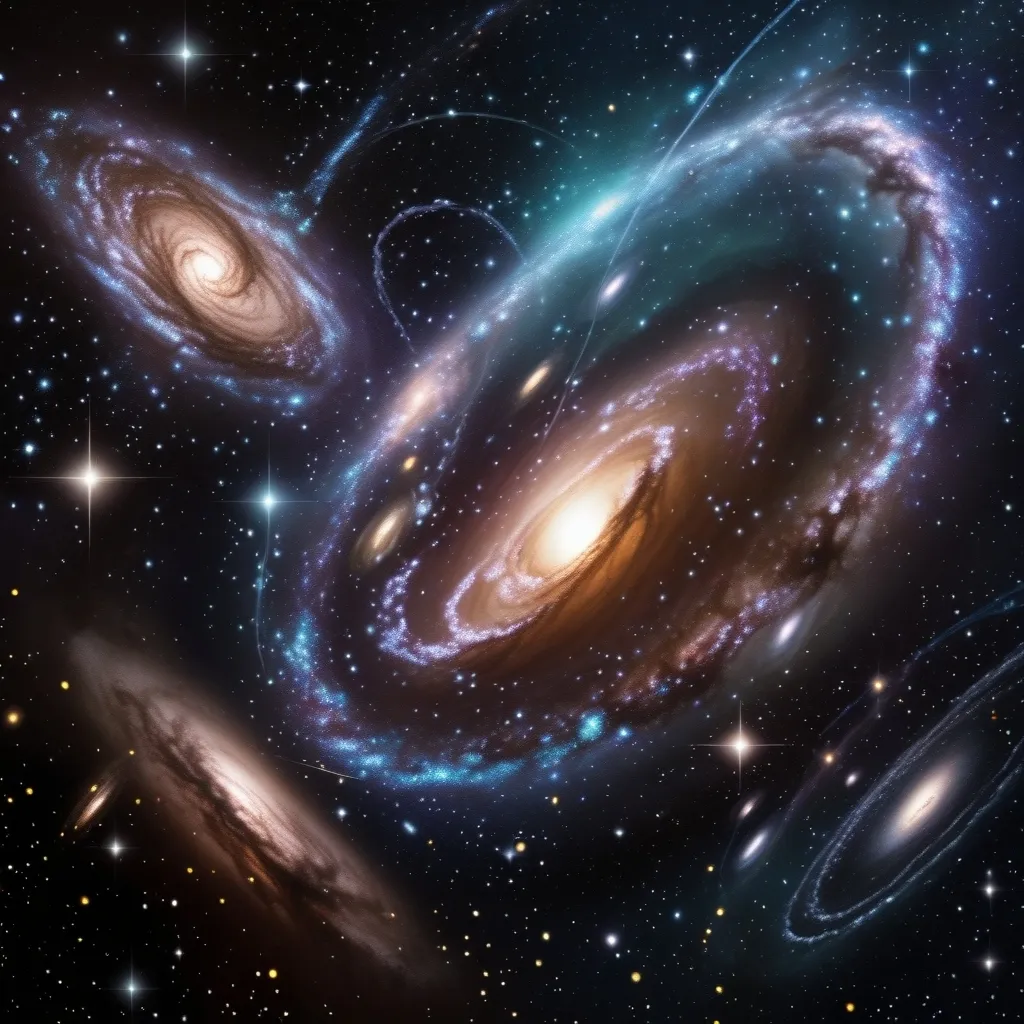Imagine peeking through a cosmic keyhole into a vast universe where the familiar glitter of stars and the grandeur of galaxies are just the tip of the cosmic iceberg. Beneath this visible realm lies an unseen universe dominated by dark matter, a mysterious entity that makes up an astounding 85% of the universe’s mass. Yet, it remains shrouded in cosmic invisibility, eluding our direct gaze and igniting a quest filled with scientific intrigue and innovation.
The narrative of dark matter began its first chapter in the 1930s, thanks to the curious mind of Swiss astronomer Fritz Zwicky. As he was diving into the cosmic depths of the Coma Cluster, a massive congregation of over 1,000 galaxies, a peculiar observation caught his eye. These galaxies raced along at breakneck speeds that couldn’t be accounted for by the visible matter alone. This cosmic conundrum led him to propose the existence of “dunkle Materie,” or dark matter—a kind of invisible cosmic glue keeping the galaxies in place.
But how can anyone be so sure that dark matter is really out there if it’s invisible? The answer might feel like it’s straight out of a cosmic detective novel—through the silent language of gravity. Dark matter influences ordinary matter with its gravitational pull, and these interactions write themselves into the universe in subtle, yet undeniable ways. Take galaxy rotation curves, for example. They paint a fascinating picture: instead of slowing as we move away from the core, these rotation speeds persist at a steady pace, hinting at a cloaked, massive presence of dark matter.
Galaxy clusters give up more of dark matter’s secrets. Imagine two massive clusters colliding, an epic dance where visible matter like stars and gas separate from their invisible companion. The mass distribution and the warping of light—known as gravitational lensing—expose this mysterious separation. Even the relic heat from the Big Bang, the cosmic microwave background, contains whispers of dark matter. The tiny fluctuations in this ancient radiation align with a universe enveloped in dark matter’s embrace.
Yet, despite these cosmic breadcrumbs, direct detection of dark matter particles remains a tantalizing, unfulfilled quest. Scientists have floated several candidates as possible particles, including weakly interacting massive particles (WIMPs) and axions. WIMPs, possibly as hefty or heftier than protons, quietly slip past ordinary matter, making detection a Herculean task. Axions, extremely lightweight—almost ephemeral—may hold the key, with masses as minuscule as a ten trillionth of an electron.
Ever-resourceful, scientific explorers have plunged underground and into the intricate corridors of the Large Hadron Collider, setting up shop to catch these evasive particles. These delicate tools are capable of picking up the faintest clues that a dark matter particle might leave behind. Yet, even with cutting-edge tech and relentless pursuit, tangible proof remains just beyond our grasp.
Not all scientists are convinced that dark matter holds the truth. Some propose intriguing alternatives—tweaking the very laws of gravity instead of welcoming new cosmic players into the fold. Ideas like Modified Newtonian Dynamics (MOND) and tensor-vector-scalar gravity (TeVeS) attempt to solve the puzzles sans dark matter. However, these theories struggle to paint a coherent picture across various observations, tentatively pointing back to some form of unseen dark matter.
Dark matter, in its enigmatic dance, plays a lead role in the cosmic theater. It lays the gravitational framework that lets ordinary matter gather and forge the galaxies we marvel at. Without its unseen hand, the universe as known today might look radically different—vast clusters of stars hanging in a delicate gravitational balance made possible by this cosmic shadow.
Think of wandering through a dimly lit forest, where mysterious whispers rustle through the leaves, hinting at life unseen. That’s the essence of how dark matter touches Earthly lives—an invisible ocean of particles flowing through us every moment, an ethereal reminder of cosmic mysteries yet unresolved.
This great cosmic pursuit has spurred technological leaps. From hyper-sensitive detectors and cryogenics to powerful algorithms, the quest for dark matter propels advancements spilling into areas like material science and AI.
The road ahead promises more adventurous exploration in search of dark matter’s secrets. Exciting developments like quantum computing and refined detectors are on the horizon, each offering hope of unmasking these elusive particles. Some have even started exploring the notion of dark matter as primordial black holes, relics from the universe’s infancy, offering alternative insights into the cosmos’ hidden mechanics.
Dark matter, the unseen titan of the cosmos, remains a tantalizing enigma that challenges and inspires. While direct evidence is a goal still pursued, the invocation of gravity’s whispers and cosmic dances assures us that dark matter is out there, weaving the vast tapestry of the universe we are just beginning to comprehend. As the scientific journey soldiers on, it holds the promise of unveiling mysteries that lie beyond the horizons of our current understanding, giving us a deeper glimpse into the hidden forces shaping our cosmic destiny.






